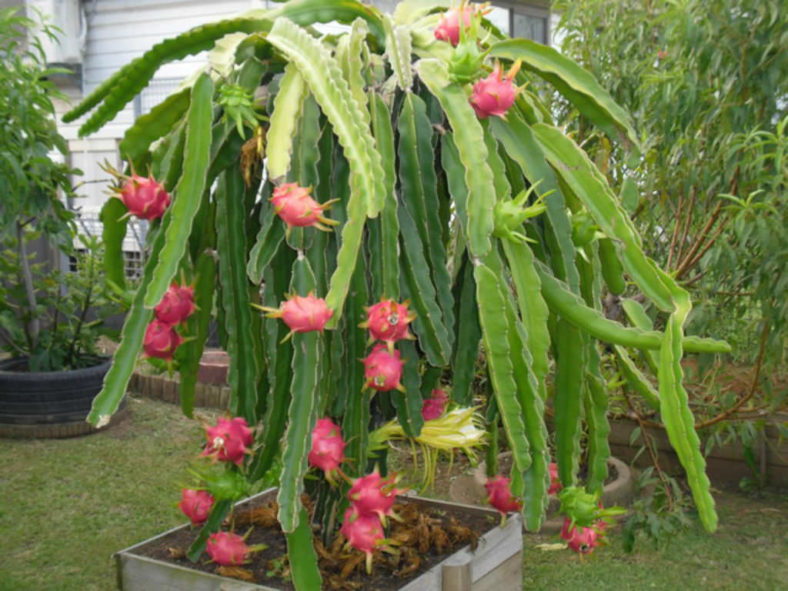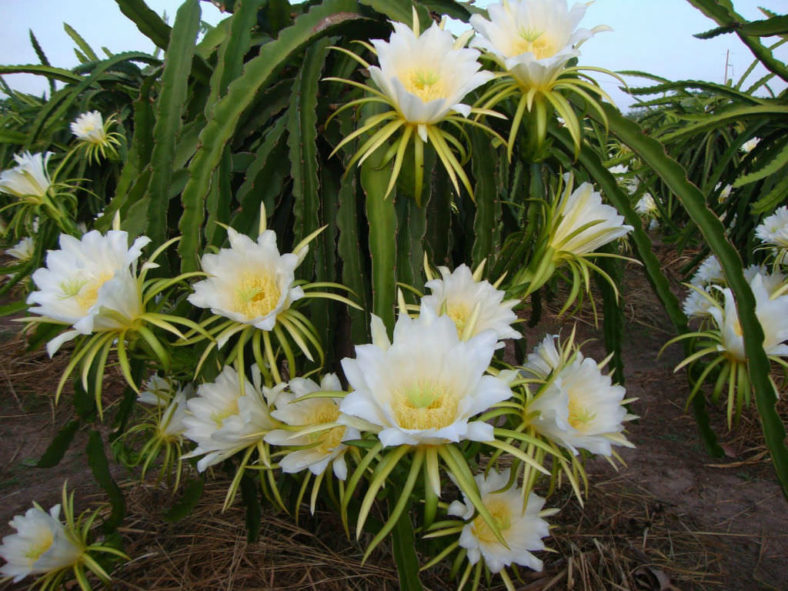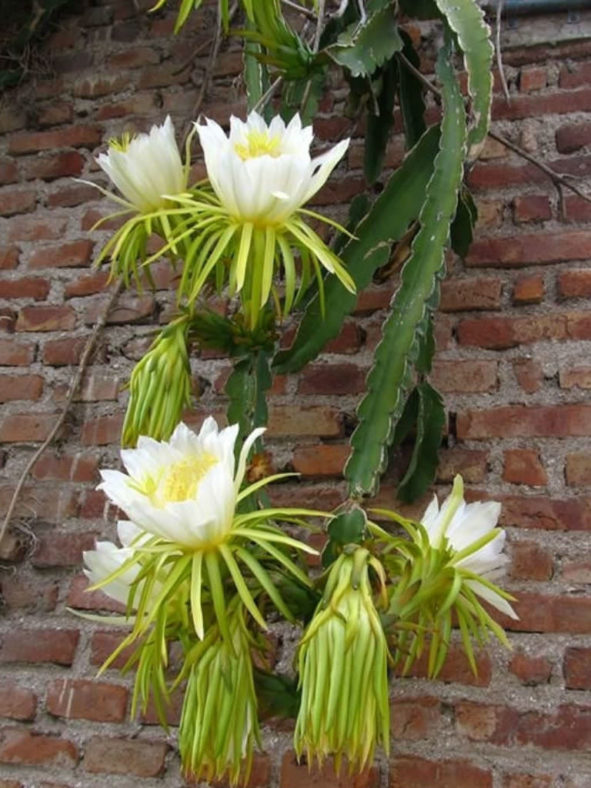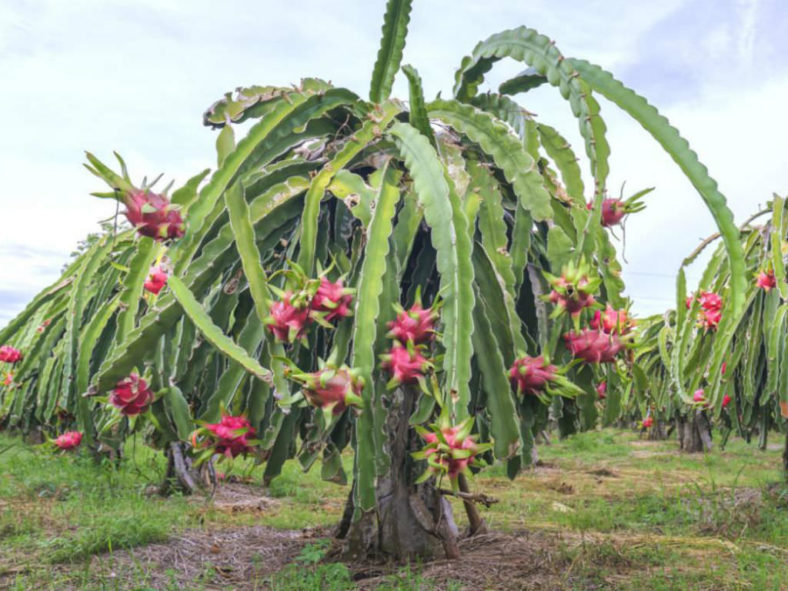Scientific Name
Selenicereus undatus (Haw.) D.R.Hunt
Common Name(s)
Belle of the Night, Cinderella Plant, Dragon Fruit, Honolulu Queen, Moonlight Cactus, Night-blooming Cereus, Pitaya, Queen of the Night, Red Pitaya, Strawberry Pear, White-fleshed Pitahaya
Synonym(s)
Cereus undatus, Cereus undulatus, Harrisia undata, Hylocereus undatus
Scientific Classification
Family: Cactaceae
Subfamily: Cactoideae
Tribe: Hylocereeae
Genus: Selenicereus
Etymology
The specific epithet "undatus" (pronounced "un-DAY-tus") means "in a wavy or wave-like form" and refers to the wavy edges of the ribs of the branches of this species.
Origin
The precise origin of Selenicereus undatus is uncertain, and it may be a hybrid. It grows as a lithophyte or hemiepiphyte and is widely cultivated throughout the tropics.
Description
Selenicereus undatus, formerly known as Hylocereus undatus, is a highly branched cactus with creeping, sprawling, or clambering stems with joints generally having three ribs. The stems are green, climb by aerial roots, and can grow up to 33 feet (10 m) long. The joints can reach a length of 4 feet (1.2 m). The margins of the ribs of the joints are horny and undulate, with wings measuring up to 2 inches (5 cm) in width. The conical spines are grayish-brown to black and can grow up to 0.4 inches (1 cm) long. Each areole bears 1 to 3 spines.
The scented, nocturnal flowers are white with green outer tepals and bracts and can reach a length of 14 inches (35 cm) and a diameter of 12 inches (30 cm). They appear from late spring to early summer. The fruits are oblong to oval and can grow up to 5 inches (12.5 cm) long and 3.6 inches (9 cm) in diameter.

How to Grow and Care for Selenicereus undatus
Hardiness: USDA hardiness zones 10a to 11b: from 30°F (-1.1°C) to 50°F (10°C).
Like most cacti, Cereus is a fairly low-maintenance and hardy plant. Ensure they receive sufficient water without becoming waterlogged, especially during the summer, and fertilize them for optimal results. If the roots have become black or overly soft, the cactus could be experiencing root rot. Cut away the affected parts and replant. Most gardeners interested in cacti should be able to cultivate these without much problem.
If your Cereus outgrows its container, it may become necessary to repot it. If so, ensure the soil is dry and remove the pot. Remove old soil, prune away rotted or dead roots, and then replant in a new pot, backfilling with fresh soil. Do not overwater cacti planted in new pots, which can lead to root rot. It should be left dry for about a week and then watered lightly.
These cacti propagate pretty easily from cuttings. Sever a branch and replant in moist, well-drained soil.
Learn more at How to Grow and Care for Cereus.
Links
- Back to genus Selenicereus
- Succupedia: Browse succulents by Scientific Name, Common Name, Genus, Family, USDA Hardiness Zone, Origin, or cacti by Genus
Photo Gallery
Click on a photo to see a larger version.


